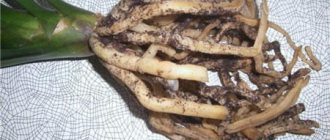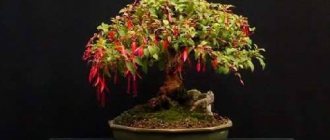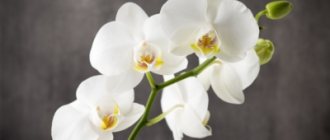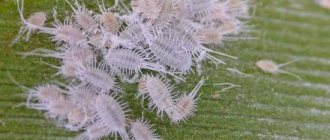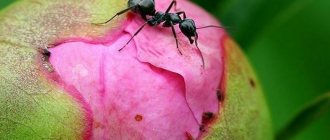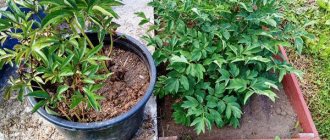What kind of plant is this?
Impatiens is a genus of perennial or annual herbaceous plants of the Balsamaceae family. Their homeland is considered to be the subtropics and tropics of Asia and Africa, East Africa and Zanzibar. some species can be found in Central Asia. The plant has erect leaves, the stem height reaches 50 centimeters.
The leaves are lanceolate or oval in shape and can reach 8-12 centimeters in length. The original color of balsam is red or pink , but at the moment breeders have bred flowers with petals of a different color, except yellow and blue. After flowering, green fruits are formed, after ripening they form a dry capsule.
The fruit has an oblong shape. 1 gram of bud can contain up to 100 seeds. The name of the genus includes the name “impatiens”, which means sensitive, intolerant of pressure.
IMPORTANT : The name fully reflects the nature of the dry capsule; with any touch, the plant “shoots” the seeds at a distance of up to 2 meters. For this property, people call it “Touch-me-not”; the balsams themselves are easy to care for, resistant to dry air, grow well, and are not particularly demanding of heat.
Structural features
The main features include the second popular name of the flower – “weather forecaster”. Due to the extremely sensitive flowers, the plant senses changes in the atmosphere very well , which helps the owner of the balsam determine the weather.
An example is that before the rain, droplets appear on the stems, twigs and leaves, which are a sugar substance that crystallizes in the fresh air. So, by having such a plant at home, you will acquire an infallible weather forecaster.
Possible reasons
Why does balsam shed buds and flowers? After all, all sources say that balsam is not the most whimsical plant. Despite the integrity of the entire plant, the buds are the most unprotected part of the plant .
It is often very difficult to determine the problem that causes buds to fall off, but the following reasons often lead to this problem:
- pests such as mites and tripe;
- irregular watering;
- incorrectly selected soil, since balsam is extremely harmful to the acidity level; if it does not match, the plant begins to die;
- excessively dry air.
Why flowers and unopened buds may fall off on balsam and what to do
Impatiens or, as it is also called, weather forecaster, is a very unpretentious indoor plant. The only problem may arise during the flowering period - the buds fall off. There are several reasons why balsam sheds unopened buds. By eliminating them, you can get an excellent flowering bush.
When do balsam buds appear?
Impatiens bloom for a long time - from late May to late November. If care is complete and of high quality, then the plant can be in a vegetative state almost all year round. This happens as follows: some buds die, and others begin to open at the same moment.
Several varieties of plants nearby
Insufficient air humidity
The flowers of the plant may fall off even in the first stages of flowering if the air humidity in the room is too low.
For this indoor plant, the air humidity should be at least 70%.
For reference! The buds may not open if the temperature is too low at normal air humidity. Because of this, the plant may also shed its leaves.
Deficiency of certain nutrients
An excess of potassium is the answer to the question of why balsam buds do not bloom. Due to the lack of this same substance, the process of withering of flowers that have not yet bloomed begins.
Untimely transplant
If you do not replant the plant until the soil is completely depleted, a lot of problems will immediately arise.
Transfer is carried out according to schedule
It is worth changing the container and soil for the weather forecaster once every few years. The exact timing is determined by the specific variety of balsam.
Planting a plant in the wrong soil
Leaves and buds may fall off completely if the wrong substrate is initially prepared. Normal soil for balsam corresponds to the following characteristics:
- Has a slightly acidic environment.
- The composition may include equal parts: compost, turf soil, humus and perlite.
- Second substrate option: mix peat and sand with turf soil in a ratio of 1:1:2.
Soil for a flower
If this reason is eliminated, then there will be no problems with the further growing season.
The appearance of pests
If pests appear, problems arise with the entire above-ground part of the plant. Flowers and leaves begin to turn yellow, buds fade and total loss is observed.
Additional Information! The most dangerous pest for a weather forecaster is considered to be the spider mite.
To return the flower to its normal state, you need to get rid of pests by taking appropriate treatment measures. It is necessary to use chemical insecticides, because folk remedies are not so effective.
Prevention of pests in this case plays an important role.
We treat the “touchy”
To save your plant, you need to immediately take measures related to creating the necessary living conditions for the plant:
- First, you need to set a certain air temperature in the room. The ideal temperature range is 12-14 degrees Celsius.
- Next comes humidity, there is nothing difficult with it, ordinary room humidity is suitable for balsam, the main thing is not to dry the air too much.
- With watering, everything is much more complicated.
Impatiens is a fairly moisture-loving plant that has succulent, moisture-filled stems. Of course, if watering is not sufficient, the plant will not wither, but its leaves will lose their elasticity, and the lower ones may even fall off. Watering must be observed as follows: in summer, abundant watering, almost all the ground should be moist. In winter, watering is reduced. Do not overdo it with watering through the pan; an excess of water in it leads to rotting of the root system.
Impatiens need to be fed with mineral fertilizers every two weeks. Again, don't overdo it. For example, an excess of nitrogen fertilizers can enhance stem growth, while at the same time it will slow down flower growth.- Don’t forget about replanting a freshly purchased plant. It is worth choosing a pot that is small, according to the size of the root system, since if the pot is much larger, flowering may be delayed. At the same time, plants grown from cuttings should not be replanted.
- You don’t have to bother with the soil, since balsams are unpretentious to the soil.
Diseases of balsam include the appearance of various pests, such as aphids, whiteflies and spider mites (read about how to deal with spider mites on balsam here). Insecticides will help you against pests . Prevention: avoid rotting of the soil, and also prevent drying out the air.
Read more about diseases and pests of balsam, as well as how to cure the plant, in our material.
How to revive a flower?
For
In order to revive an already damaged flower, it is necessary to remove the infected areas. The plant itself must be treated with special preparations that help get rid of insects.
If you are afraid of recurrence, carry out the treatment again after 5-6 days. This will allow you to get rid of insects that, at different phases of their life cycle, may be immune to the components of such drugs.
If the problem is gray mold or root rot , then limit watering until the soil is completely dry.
Impatiens is a rather finicky, but beautiful indoor plant. It will be easy to grow if you follow all the requirements regarding watering, lighting and temperatures.
Consequences of not solving the problem in a timely manner
The main consequences include the above-mentioned appearance of parasites. But improper care and maintenance conditions can also lead to illness and death of the flower.
- At low temperatures and at the same time an excess of moisture, the leaves may turn yellow and fall off, a gray fluffy coating may appear (read about why balsam leaves fall off and how to help the plant, and from this article you will learn why the leaves of an indoor flower turn yellow ). This type of plaque is called “Grey Rot”.
- Under the same conditions, but with increased temperature, the leaves will simply droop. Simply lowering the temperature will help.
- If there is excess moisture due to tray irrigation, the root system may begin to rot.
- Buds and flowers may fall off due to dry air and high temperatures.
- In the absence of nutrients and lack of light, the stems begin to stretch, and the flowers, on the contrary, become small and dry.
ATTENTION : With all of the above causes of disease, the following problems may arise: petals fly away, leaves turn pink and become stained, lack of flowering, the number of flowering buds becomes smaller, and so on.
Read about why indoor balsam does not bloom, but only leaves grow, here.
Symptoms of improper agricultural practices
An indoor flower signals errors in agricultural technology with fallen leaves, scant flowering or lack thereof. Often formed buds of balsam fall off without opening, which upsets and worries the inexperienced gardener. Timely review and adjustment of the rules of care and cultivation allows you to save balsam.
A true understanding of symptoms comes with experience. The priority is to preserve the plant by providing it with the necessary assistance. Patient care and care will bear fruit in the form of a harmonious flowering herbaceous bush that blooms almost all year round.
Most often, balsam reports incorrect agricultural practices as follows:
- Blotches, spots on leaves;
- The plant loses flowers;
- The stems become thinner and stretch out;
- Leaves fall quickly;
- The specimen sheds buds.
Improper care of a houseplant attracts flower pests to it. It is important to remember that proper cultivation and daily care of balsam protects it from pest damage.
Most often the plant is affected by:
Preventive measures
Basic preventive measures include normalizing temperature, soil moisture, dry air and normalizing soil acidity. In addition, when pests appear, it is worth using insecticides .
Feeding can help, the main thing is not to overdo it, because you can make it even worse. Avoid sudden changes in temperature, and do not turn an already flowering plant. In winter, you should not place it near a north window.
In conclusion, I would like to say that balsam, despite the difficulties with caring for the buds, is a very beautiful and useful plant that will appeal to both beginning gardeners and experienced gardeners.
Also, do not forget about 500 different varieties, each of which has its own unique coloring and modified conditions. for example, some balsams are resistant to dry air, but at the same time more demanding of watering. In general, the choice remains with the gardener.
